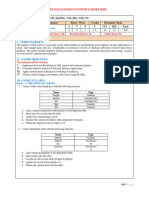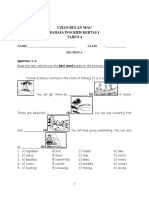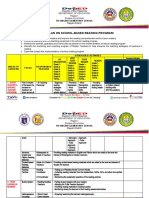0% found this document useful (0 votes)
38 views23 pagesDBMS File
The document contains details of an experiment conducted by a student named Amisha Sharma on database management systems. The experiment involves creating entity-relationship (E-R) models for bus reservation and library management systems. It includes defining entities, attributes, schemas, and drawing the E-R diagrams for both systems. The document also describes creating tables, adding/updating columns, inserting records, and applying constraints in SQL.
Uploaded by
Amisha SharmaCopyright
© © All Rights Reserved
We take content rights seriously. If you suspect this is your content, claim it here.
Available Formats
Download as PDF, TXT or read online on Scribd
0% found this document useful (0 votes)
38 views23 pagesDBMS File
The document contains details of an experiment conducted by a student named Amisha Sharma on database management systems. The experiment involves creating entity-relationship (E-R) models for bus reservation and library management systems. It includes defining entities, attributes, schemas, and drawing the E-R diagrams for both systems. The document also describes creating tables, adding/updating columns, inserting records, and applying constraints in SQL.
Uploaded by
Amisha SharmaCopyright
© © All Rights Reserved
We take content rights seriously. If you suspect this is your content, claim it here.
Available Formats
Download as PDF, TXT or read online on Scribd
/ 23






















































































